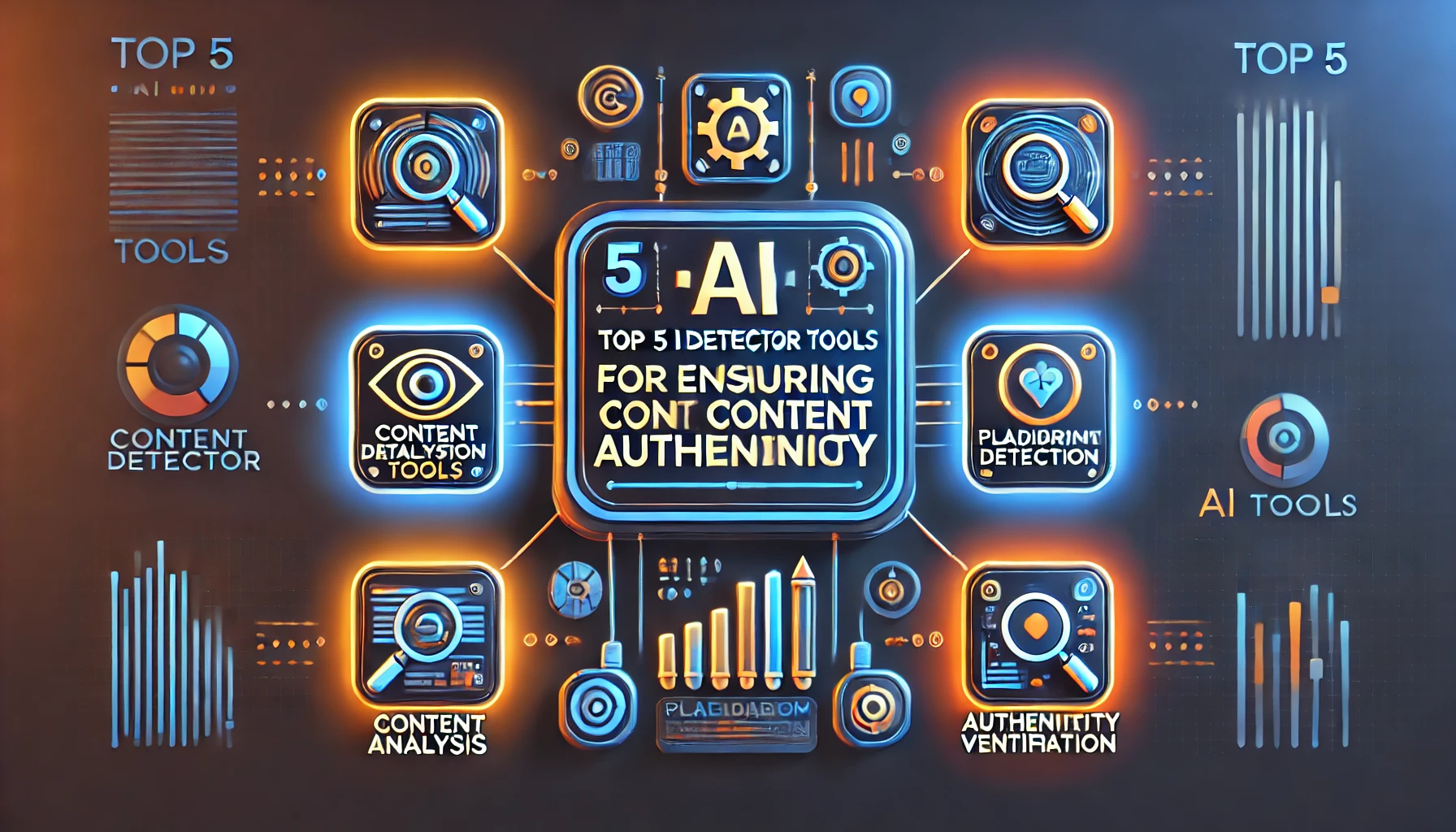In the age of rapid technological advancement, artificial intelligence (AI) is revolutionizing industries worldwide. From education to journalism, AI-generated content is becoming a staple. However, as AI technology evolves, the need for reliable AI detectors to verify content authenticity has skyrocketed. These tools help users differentiate between human-generated and AI-generated text, ensuring that AI remains a valuable tool without compromising originality. If you’re curious about the best AI detector tools to safeguard your content or maintain academic integrity, you’re in the right place. In this guide, we’ll explore the top 5 AI detector tools that can make all the difference.
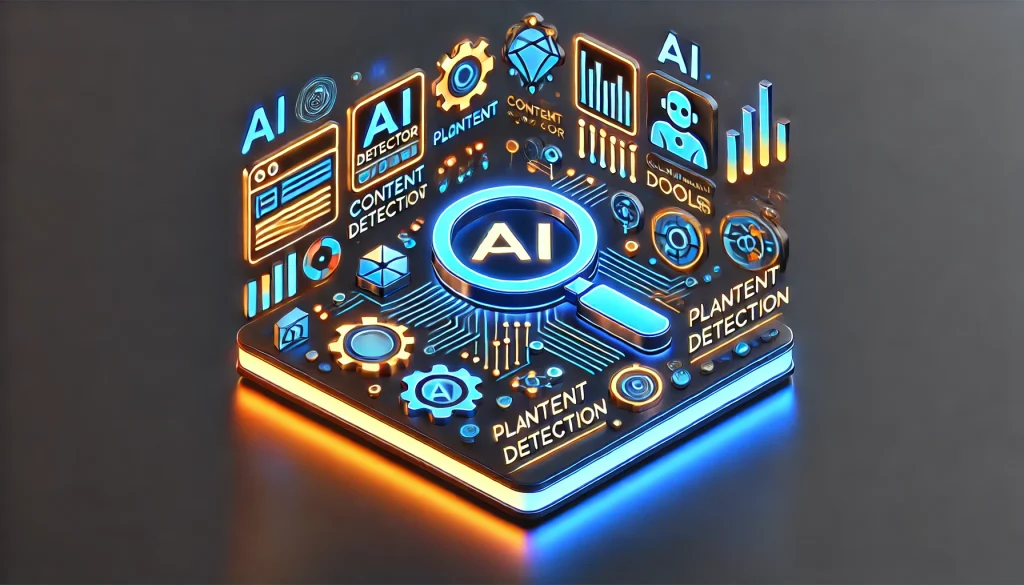
List of AI Detector Tools
1. Originality.AI
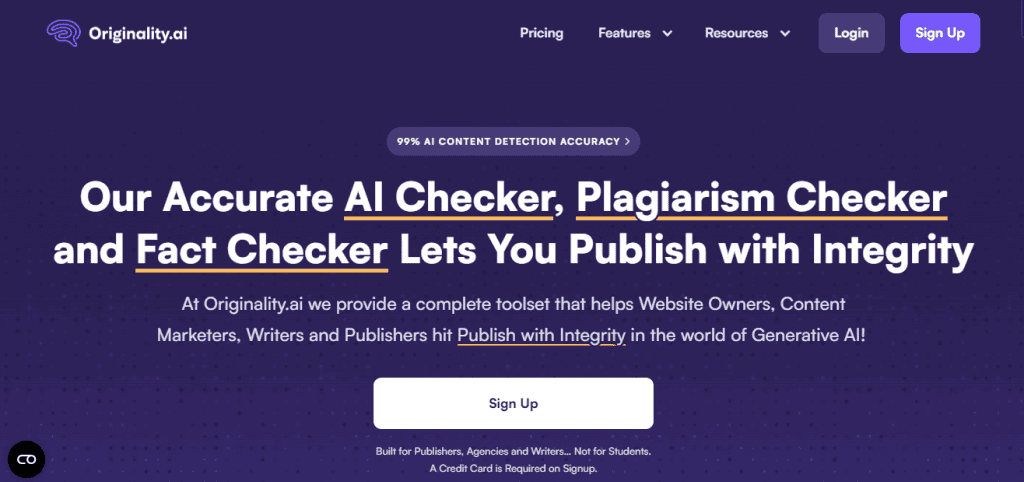
AI is a powerful AI content detection tool that offers robust features for both individuals and businesses. It is specifically designed to detect AI-generated content and plagiarism in writing. With accuracy and simplicity at its core, Originality.AI is frequently used by content creators, publishers, and students. What sets it apart is its high precision in detecting content generated by tools like GPT-3, making it an excellent choice for bloggers and businesses concerned with authenticity.
2. Quillbot AI Detector
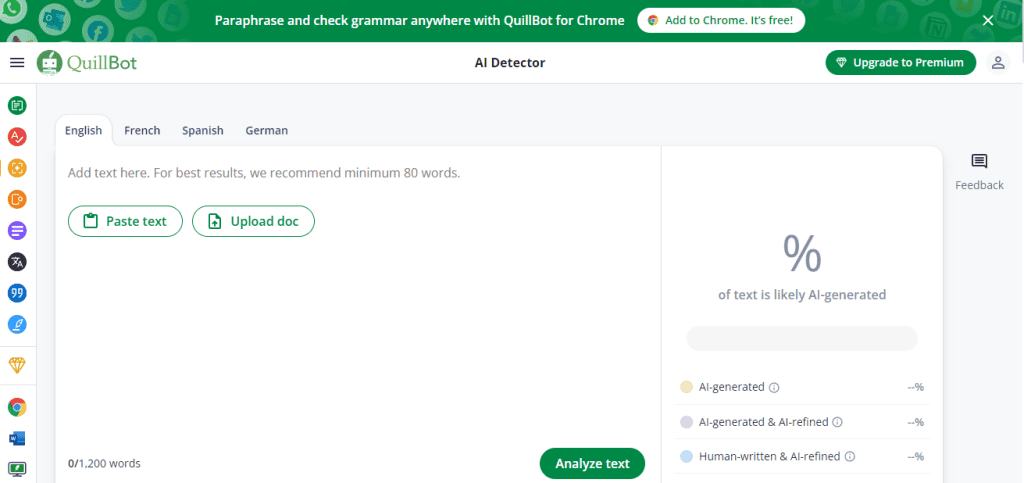
Quillbot is best known as a paraphrasing tool, but its AI detector feature helps writers, educators, and editors verify whether the content is AI-generated or human-written. Its AI-powered system checks for patterns typical of machine-generated text. Quillbot’s intuitive interface allows users to edit and humanize AI-generated content easily, ensuring it meets the required quality and authenticity standards.
3. GPTZero

GPTZero is one of the more prominent names in AI content detection. Designed by Princeton student Edward Tian, this tool analyzes text for characteristics unique to AI generation. GPTZero is particularly popular among educators who want to ensure students submit original work. It provides users with clear insights into the likelihood of AI involvement in content creation and allows quick identification of machine-written text.
4. Writer.com AI Detector
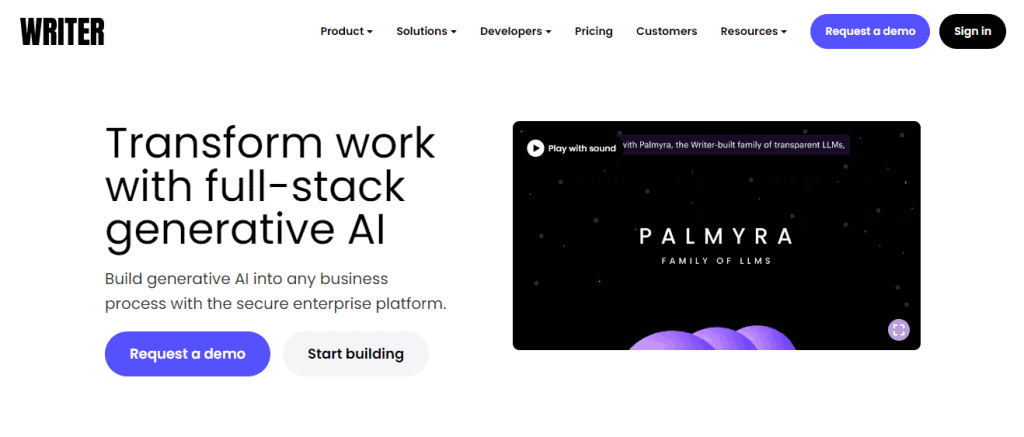
Writer.com is a comprehensive writing platform offering multiple tools, including an AI detector. This AI detector tool focuses on improving written content by identifying any sections that may have been generated by AI. Particularly useful for content creators, marketers, and businesses, it helps humanize AI-generated text and optimize it for better engagement with target audiences.
5. Crossplag AI Detection
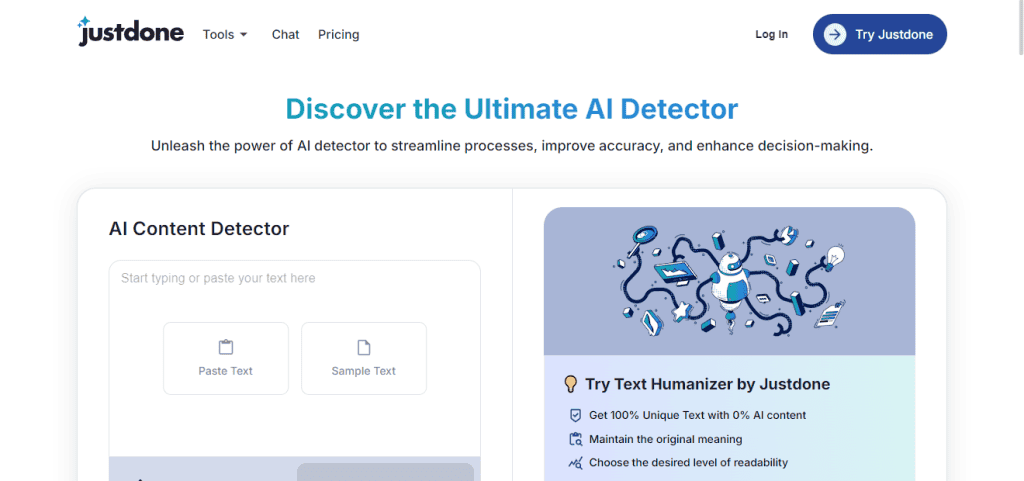
Crossplag integrates AI detection with plagiarism checking, offering a two-in-one solution for academic and professional users. This tool works across various content types and identifies text that exhibits patterns typical of AI generation. It’s an excellent option for institutions and organizations that require both originality and authenticity in submitted documents.
Summary of AI Detector Tools
AI detector tools have become essential in today’s content-driven world. Whether you’re a writer, teacher, marketer, or business owner, ensuring the authenticity of your content is crucial. These tools provide a range of functions, from detecting AI-generated text to ensuring plagiarism-free work. They help bridge the gap between AI advancements and human creativity, allowing users to humanize AI-written content and maintain originality.
For instance, Originality.AI focuses heavily on pinpointing AI-generated text and plagiarism, making it a great tool for businesses and students alike. On the other hand, Quillbot AI Detector offers dual functionality by helping writers edit AI-generated content to make it more human-readable. Tools like GPTZero and Writer.com are perfect for educators aiming to prevent students from relying too much on AI for written assignments. Each tool in this list is unique, serving different needs across various industries, but all aim to protect content originality and integrity.
Conclusion
As AI technology continues to advance, the line between human and machine-generated content becomes blurrier. With the rise of AI-generated text, ensuring authenticity and originality is critical for content creators, educators, and businesses alike. The top 5 AI detector tools listed above are indispensable for those who wish to maintain content integrity. From academic settings to digital marketing campaigns, AI detection tools play a crucial role in distinguishing between human creativity and machine algorithms. Whether you’re using AI tools for efficiency or trying to spot AI-generated content, these detectors ensure that the human element remains intact in writing.
FAQ
What is an AI detector, and why is it important?
An AI detector is a tool designed to identify whether a piece of content has been generated by AI. In the context of artificial intelligence, this technology helps ensure the authenticity of written work, especially in academic and professional settings. It helps educators, businesses, and writers verify the originality of the content and avoid relying on AI without transparency.
Which AI detector is best for writers?
For writers looking to humanize AI-generated content, Quillbot AI Detector is a great option. It not only detects AI-generated text but also provides paraphrasing tools that help improve the readability and natural flow of the content. Additionally, Writer.com offers features specifically designed to enhance and humanize AI-written text for content creators.
Can AI detectors detect content generated by tools like GPTZero or Writer?
Yes, AI detectors can detect content generated by various AI writing tools, including GPTZero and Writer.com. These detectors use algorithms designed to identify specific language patterns and sentence structures common in AI-generated text, allowing them to flag such content effectively. Many AI detectors, including Originality.AI and Crossplag, are equipped to handle content from these widely-used AI tools.
Ethan Park holds a PhD in Artificial Intelligence, having conducted research in machine learning algorithms and natural language processing. With a strong foundation in mathematics and programming, Ethan is passionate about exploring the ethical implications and applications of AI.

